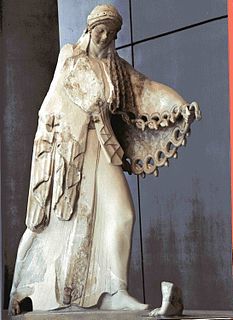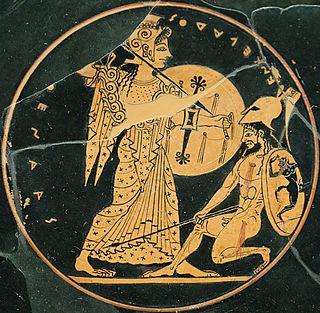 W
WDraco, also called Drako or Drakon, was the first recorded legislator of Athens in Ancient Greece. He replaced the prevailing system of oral law and blood feud by a written code to be enforced only by a court of law. Draco was the first democratic legislator requested by the Athenian citizens to be a lawgiver for the city-state, but the citizens had not expected that Draco would establish laws characterized by their harshness. Since the 19th century, the adjective draconian refers to similarly unforgiving rules or laws, in Greek, English, and other European languages.
 W
WHarmodius and Aristogeiton were two ancient Athenian lovers that became known as the Tyrannicides, the preeminent symbol of democracy to ancient Athenians, after they committed an act of political assassination at the 514 BC Panathenaic Festival. They assassinated Hipparchus, thought to be the last Peisistratid tyrant, though according to Thucydides Hipparchus was not a tyrant but a minister. They also planned to kill the real tyrant of Athens, Hippias, but were unsuccessful.
 W
WHipparchus or Hipparch was a member of the ruling class of Athens. He was one of the sons of Peisistratos. He was a tyrant of the city of Athens from 528/7 BC until his assassination by the tyrannicides, Harmodius and Aristogeiton in 514 BC.
 W
WDiacria (Διακρία) is an ancient name for the highlands in the north-east of Attica in Greece, surrounding the Plain of Marathon.
 W
WThe Old Temple of Athena was an Archaic temple located on the Acropolis of Athens between the Older Parthenon and Erechtheion, built around 525–500 BC, and dedicated to Athena Polias, the patron deity of the city of Athens. It was destroyed by the Persians in 480 BC, during the Destruction of Athens. It was located at the center of the Acropolis plateau, probably on the remains of a Mycenaean palace. The complex is sometimes described by the name "Dörpfeld foundations", after the archaeologist who found the location of the temple. It was referred to as "Archaios Neos" by the Greeks.
 W
WOltos was a Late Archaic Greek vase painter, active in Athens. From the time between 525 BC and 500 BC, about 150 works by him are known. Two pieces, a cup in Berlin and a cup in Tarquinia, are signed by him as painter.
 W
WThe Panathenaic Games were held every four years in Athens in Ancient Greece from 566 BC to the 3rd century AD. These Games incorporated religious festival, ceremony, athletic competitions, and cultural events hosted within a stadium.
 W
WPeisistratos, latinised Pisistratus, the son of Hippocrates, was a ruler of ancient Athens during most of the period between 561 and 527 BC. His legacy lies primarily in his instituting the Panathenaic Games, historically assigned the date of 566 BC, and the consequent first attempt at producing a definitive version of the Homeric epics. Peisistratos' championing of the lower class of Athens, the Hyperakrioi, is an early example of populism. While in power, Peisistratos did not hesitate to confront the aristocracy, and he greatly reduced their privileges, confiscated their lands and gave them to the poor and funded many religious and artistic programs. He did so with the goal of improving the economy and spreading the wealth more equally among the Athenians.
 W
WSolon was an Athenian statesman, lawmaker and poet. He is remembered particularly for his efforts to legislate against political, economic and moral decline in archaic Athens. His reforms failed in the short-term, yet he is often credited with having laid the foundations for Athenian democracy. He wrote poetry for pleasure, as patriotic propaganda, and in defence of his constitutional reform.